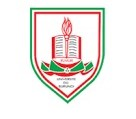**Recommandations pour la réalisation d'un poster **
- Format :
- A0 (H : 1,20 m - L : 0.80 m)
- Orienté verticalement ou horizontalement
- Niveau scientifique de l’auditoire : grand public un minimum
- Langue : français ou anglais
- Les objectifs de votre poster doivent :
- Informer sur les avancées de votre travail
- Provoquer des échanges
- Susciter la curiosité et l’intérêt du plus grand nombre
- Les participants restent en moyenne, entre 3 et 5 minutes devant un poster
- Le poster doit donc être attractif, structuré et concis
- Ne présentez que l’essentiel, en utilisant un maximum de visuels qui appuient et résument vos résultats
- La réalisation :
- Le poster doit capturer l’attention d’assez loin et être lisible sans effort.
- Suivre une organisation logique et structurée (identifier les différentes parties du poster et adopter un sens de lecture naturel et explicite).
- Proposer un bon équilibre entre le texte, les photos et les schémas ou graphiques
- Privilégier les figures
- Se retreindre à des phrases courtes et utiliser la forme active
- Ne pas faire de phrases en majuscule, même pour le titre
- Travailler sur la forme : contrastes des couleurs, et la forme des caractères (titre visible à 5m et contenu à 1-2m)
- Préférer les polices de type Arial, Univers ou Helvetica, le gras et le soulignement.
- Eviter les polices de type Times et l'italique…
- Le contenu :
- Le titre doit être accrocheur et évocateur. Il doit résumer l’objectif, les moyens et la conclusion
- Nom des auteurs (précisant les adresses mail) et organismes (avec le(s) logo(s)) sous le titre
- Pas besoin de titre pour Introduction et Conclusion
- Les autres grands titres comme Matériel et Méthodes, Résultats et Discussion doivent être bien évidents puisqu’ils débutent des sections bien distinctes
- Introduction/objectifs : (en haut à gauche) replace l’étude dans le contexte et identifie clairement les objectifs
- Méthodes et Résultats : Les méthodes doivent être réduites au maximum. Ces deux parties doivent représenter les 2/3 du poster. Utiliser une taille de police plus grande pour reprendre vos résultats principaux et faciliter la lecture
- Conclusions : (en bas à droite) reprend les grandes conclusions, discussions et perspectives
- Numéroter les figures pour donner l’ordre de lecture, inutile d’indiquer « Figure » ou « Fig. », qui surcharge le poster
- Ajouter quelques références bibliographiques pour renforcer le bon positionnement scientifique du projet (en bas et en petit).
** Recommendations for creating a poster **
- Format :
- A0 (H : 1,20 m - L : 0.80 m)
- Oriented vertically or horizontally
- Scientific level of the audience: general public at least informed
- Language: French or English
- The objectives of your poster :
- Inform about the progress of your work
- Provoke exchanges
- Arouse the curiosity and interest of as many people as possible
- Participants stay on average between 3 and 5 minutes in front of a poster.
- The poster must therefore be attractive, structured and concise.
- Present only the essentials, using as many visuals as possible to support and summarize your results.
- The production :
- The poster must capture attention from a sufficient distance and be readable without effort.
- Follow a logical and structured organization (identify the different parts of the poster and adopt a natural and explicit reading direction).
- Propose a good balance between text, photos and diagrams or graphics.
- Favor figures
- Stick to short sentences and use the active form
- Do not make sentences in capital letters, even for the title
- Work on the form: color contrasts, and the shape of the characters (title visible at 5m and content at 1-2m)
- PPrefer Arial, Univers or Helvetica type fonts, bold and underlining.
- Avoid Times type fonts and italics…
- The content :
- The title should be catchy and evocative. It must summarize the objective, the means and the conclusion.
- Name of authors (specifying email addresses) and organizations (with logo(s)) under the title
- No need for a title for Introduction and Conclusion.
- Other major headings such as Materials and Methods, Results and Discussion should be very obvious since they begin very distinct sections
- Introduction/objectives: (top left) puts the study in context and clearly identifies the objectives
- Methods and Results: Methods must be reduced as much as possible. These two parts must represent 2/3 of the poster. Use a larger font size to reflect your main results and make it easier to read
- Conclusions: (bottom right) summarizes the main conclusions, discussions and perspectives
- Number the figures to give the reading order, no need to indicate “Figure” or “Fig. », which overloads the poster
- Add some bibliographic references to reinforce the good scientific positioning of the project (bottom and small)

